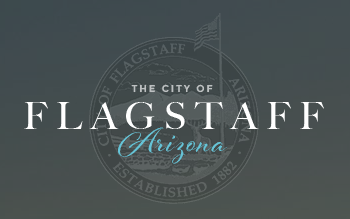 FLAGSTAFF — Mayor Paul Deasy and Superintendent Michael Penca joined forces to improve the health, well-being and academic achievement of Flagstaff’s children. The two leaders committed to transforming Flagstaff’s school grounds into nature-filled greenspaces where children can connect to the natural world and enjoy healthy, active time outdoors.
FLAGSTAFF — Mayor Paul Deasy and Superintendent Michael Penca joined forces to improve the health, well-being and academic achievement of Flagstaff’s children. The two leaders committed to transforming Flagstaff’s school grounds into nature-filled greenspaces where children can connect to the natural world and enjoy healthy, active time outdoors.
Flagstaff was selected as one of 10 cities (out of 27 applicants) to receive training and technical assistance to add nature play and outdoor learning spaces to schoolyards through Cities Connecting Children to Nature (CCCN), a joint initiative of the National League of Cities and the Children & Nature Network. Flagstaff joins a national movement of cities working to provide children with equitable access to the benefits of nature.
Research shows that green schoolyards can enhance children’s physical and mental health and academic performance, as well as community health and well-being. These green schoolyards will be used for outdoor learning and play during the school day—and be available to children, families and surrounding neighborhoods during out-of-school time. The effort will prioritize schools in neighborhoods that lack access to parks and greenspace.
“Not only do these schoolyards provide crucial spaces for children to play, learn, explore and grow, they also provide surrounding neighborhoods access to parks and greenspace, which is instrumental to the health and well-being of Flagstaff’s residents,” said Flagstaff City Manager Greg Clifton. “[It will] be a huge step towards the equity and resiliency goals in our Climate Action and Adaptation Plan.”
As part of the application process, Mayor Paul Deasy and Superintendent Michael Penca signed a green schoolyard pledge stating their shared vision to advance equitable access to nature’s benefits through the creation of green schoolyards, which are proven to bring a wide-range of health, academic and environmental benefits to children and the local community. This joint green schoolyard strategy supports Flagstaff’s related goals for increasing access to nature, neighborhood resiliency, creating pollinator habitat, and stormwater management.
During the past year, the COVID-19 pandemic highlighted the importance of access to safe, outdoor greenspaces within walking distance. Green schoolyards can fill a critical gap in neighborhoods that lack access to parks and natural areas due to inequities in how parks and greenspaces have been designed and distributed. The pandemic also inspired many schools to incorporate outdoor learning into their curriculum. City and school officials see green schoolyards as a key way to build back stronger and more equitably after COVID-19.
Local nonprofit, Terra BIRDS, will be leading the project. The Founder and Director of Terra BIRDS, John Taylor, writes, “Even though Flagstaff is surrounded by public lands and forest, there are many local youth who do not have the encouragement nor the support to explore these natural places. By welcoming a diversity of plants, appropriate urban wildlife, and food gardens into our schoolyards, we provide kids with the opportunity to develop a daily relationship with nature. This interaction is healthy for kids; and in turn, our environment needs more people to grow up caring about and actively stewarding nature.”Flagstaff will assemble a CCCN Green Schoolyards team—with members ranging from education and park officials to local nonprofit and community leaders—to receive training and technical support from national experts over the next three years. The team will map local assets, such as schoolyards, community partners, funding opportunities, and more, to create a Flagstaff green schoolyard plan. A pilot project will likely kick off next year focused on the new construction of Killip Elementary, ensuring that the schoolyard meets community needs for stormwater capture, pollinator habitat, vegetable gardening, and a space to learn and explore.
Our school has a history of incorporating our rich cultural and environmental learning opportunities to our students, and this collaborative partnership will be a positive bridge for the Sunnyside community as green schoolyards are incorporated into our new facility,” said STEM Coordinator and Technology Integration Coach Sheryl Wells.
About Cities Connecting Children to Nature (CCCN). Longstanding systems of inequity have influenced the design and distribution of green spaces. Cities Connecting Children to Nature, a joint initiative of the National League of Cities and the Children & Nature Network, with funding from The JPB Foundation, supports municipal leaders and their community partners in shifting planning, policies and programs to connect children to the benefits of nature more often and more equitably.
About the National League of Cities Institute for Youth, Education & Families (YEF Institute). The YEF Institute at the National League of Cities is the go-to place for city leaders seeking to improve outcomes for children and families. With expertise in early childhood success, education & expanded learning, promoting a culture of health, youth and young adult connections, and economic opportunity and financial empowerment, the YEF Institute reaches cities of all sizes and brings together local leaders to develop strategies via technical assistance projects, peer learning networks, leadership academies, and Mayors’ Institutes programs. Learn more at nlc.org/iyef.
About the Children & Nature Network (C&NN) The Children & Nature Network (C&NN) believes that nature makes children healthier, happier and smarter. C&NN is a US-based non-profit organization leading a global movement to increase equitable access to nature so that children—and natural places—can thrive. C&NN achieves its mission by investing in leaders and communities through sharing evidence-based resources, scaling innovative solutions, and driving policy change. Learn more at childrenandnature.org.
